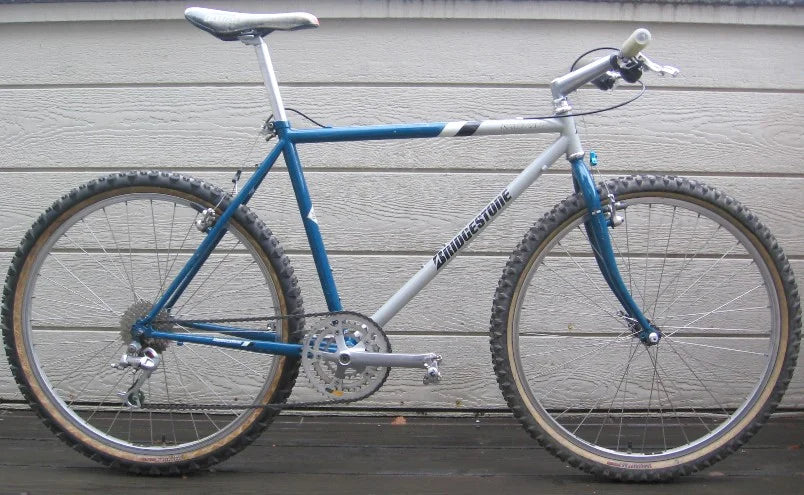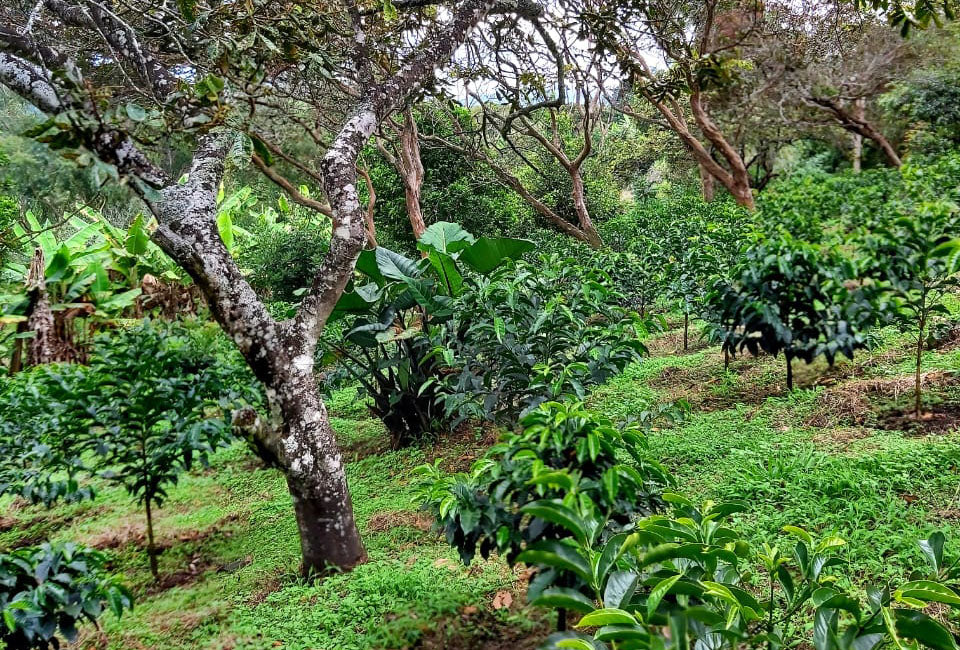A childhood reflection that turned into an idea for graphical efficiency.
BACKGROUND
Prior to approximately 2010, “alternative” coffee production techniques were not widely spread. A production facility would “produce a coffee, give it a name usually based on the producer or production location. “Washed or natural” were not necessarily be spoken about. It was “just coffee”, no specific attention to method of production.
In a time where fermentations became more prominent in the world of coffee, Coffea Circulor strived to showcase the work of certain producers as they ferment and dry the same lots in various ways. One such producer was the Altieri family which Coffea Circulor has been fortunate to work with since approximately 2018. Working close and also with pre-releases of certain coffees enabled us to also fine-tune details, not just the coffee but also the “presentation layer”. Some of the pre-release coffees carried code-names. In a dialog with Anna Lynn Altieri, daughter of Eugene Altieri, Ivica shared the history of how these abbreviations or “morphemes” came to be.
“Eugene, as you also might have noticed, I named the coffees after the family names. It stated with “Lynn” (after Anna Lynn) when you (Eugene) distributed the first coffees. Upon the first test, I found a high amount of florals in the Geisha natural. That would be the exception in respect to the naming convention. I have a naming scheme where natural processed coffees receive female names and washed coffees are governed by male names."
This was shared with Anna Lynn and also with the following response:
“Ivica, it is very thoughtful of you and makes it very personal. Actually, we are in the process of changing all our lots names from letters to the grandchildren nicknames. We are already producing new signs for the lots. For examples, Rafa, Rola, Yuyi, Ale, RR, Luci, etc. But I really liked your idea of putting Panama in front of the name, and I also love the idea of the females for the Naturals and Males for the Washed. Thank you very much for your creativity and ingenuity. If you don't mind we would like to implement your idea."
Some time passed and the Altieri family put the idea into action by using the family names for the farm plots. That year, the shipped boxes with the entire production catalog of the Altieri vacuumed sealed coffees arrived. There was Geisha, Catuai, Caturra and Typica. We started to introduce the coffees, one by one, initially with the chosen names of the Altieri family. As our “coffee label” illustrates, there is a section which includes the Region, Altitude, Varietal, Process, Lot size and Trade on the left hand side. On the right hand side is the sensory experience, based on our V60 recipe, “One” or “1:1:1”, with references to other brewing techniques as well which can showcase dominant characteristics in the coffee given some “standard” preparation methods also including Chemex and flat-bottom filters.
THE "PROBLEM"
Some time passed and we encountered a situation where a customer wrote to us and expressed that the “wrong” coffee was received - namely a natural version instead of the washed version. This was of course our “fault”, yet humble a human error can be made while the customer was sent the “correct” coffee. This was because of reading the “smaller letters” on the left hand side of the label for “Process” when picking up the actual label prior to placing/sticking it to the actual coffee bag can slip from one’s eyesight. It happened, once and it also happened twice so we have to devise a “plan” to make sure it does not happen again.
It is not a large “problem” to solve because it is in fact not a “problem”. It is a mere fact of being “visually cautious”. However, it can happen that a label is mixed in another pile and out of pure reflex, one uses a label from that specific pile.
The “solution” to the “problem” would be to introduce any kind of visual cue that can enable us to be efficient, consistent and quick. This would be to select/find the dedicated label instead of “reading from the left hand side”, removing potential error frequency and being fast.
After some brief thinking, the idea would come to mind to add a suffix to the “name” of the coffee which illustrates its specific processing method. A simple letter would do such as “W” for “Washed”, but if only added as is, it could be confusing by only having one letter or number “hanging loose”.
I, (Ivica), remember having my “old” bike near. It was/is a Bridgestone Trailblazer MB-5 from approximately 1991. Bridgestone produced several MB-models, namely MB-1 through MB-6. They carried distinctive colors and components. That was from the “era” when “mountainbikes” were introduced on the local market, however they could be referred to as “city bikes” in contemporary times as they did not carry any “shock absorbers” for “mountain biking”.
Being 12-13 years old in 1991, as kids we used to go biking together during the summer holidays with other kids in the neighborhood. Prior to the “mountainbikes”, we were on our 1-speed BMX-bikes. As kids we grew taller and “progressed” into the emerging “mountainbike”-era. I remember it happened swiftly over one summer where almost everybody shifted out their BMX-bikes to the “new generation of bikes”. I was the last one out, it took me one or two more years because I wanted to find a “mountainbike” that I felt comfortable with - not just any “just to have one”. After a while I did settle the above mentioned Bridgestone Trailblazer MB-5.
I remember approaching the place where we used to gather during the summer time. As I was getting closer, my friends would approach and start pointing towards the bike. It was like a “wow”-feeling because it had the “new generation” components such as the hubs, brakes, lever size, toe clips, etc. In the times we live in now (2019), it does not sound spectacular. In comparison, it would be like having used an older iPhone, pre 5 model with the wide 30-pin connector and suddenly moving to a more ‘modern’ iPhone with more slimmed charging cables or even wireless chargers. Above all, my “mountainbike” had a new generation of the Shimano system, “Deore DX”. Prior to that, depending on the brand of most bikes, the components were “mediocre” where shifting gears was cumbersome and not consistent and gears would “jump”.
THE SOLUTION
Looking at my bike in the workshop one day, I realized using the “Shimano”-system as a guide would be a way to “index” the various coffees and fermentations - namely as in the Shimano system - as in “DX”, “LX”, … or alike. That is how “Washed” became WX, “Natural” was expressed as “NX”, more contemporary fermentations such as Carbonic Maceration became “CMX”. Therefore, the suffix/morphemes would read “washed fermentation”.
Initially, my idea was to have written for example “W x Dilgo”, meaning “Washed Dilgo” by using “x” as a divider, however I came to realize that space will not be optimally used on the label for the coffee bag. At the same time, it might distract the consumer by reading a letter, followed by an ‘X’ prior to moving their eyes on to the actual name of the “product”.
Internally, when we produce/roast some of the coffees and given the time we have been doing this, when speaking, writing and making lookups in internal systems, listing items in invoices, … we do actually “save some time” by shortening for example “washed” with “WX”. Speaking to customers in writing, actual many letters are “saved” over the years, hence also fingers while typing.
FERMENTATION MORPHEMES WERE BORN
As each picked coffee cherry is destined for specific fermentation formulas, we denote each lot carrying the same name with a morpheme. Below is a listing of most common fermentation practices. Please use this reference to better understand the differences between equally named coffees and their fermentation formulas. For example, read a suffix of "NASDX" such as Natural Anaerobic Slow Drying Fermentation". We believe these encompass most of contemporary production techniques.
| AX | Anaerobic Fermentation |
| CX | Cold Fermentation |
| CCX | Coffee Cherry/ORAC-Centered Fermentation |
| CMX | Carbonic Maceration |
| DX | Dry Fermentation |
| EX | Extended Fermentation |
| HX | Hypoxia Fermentation |
| LX | Lactic Fermentation |
| NX | Natural Fermentation |
| RHX | (Red) Honey Fermentation |
| SX | Slow Fermentation |
| WX | Washed Fermentation |
| YX | Yeast Inoculation |
SUMMARY
That is the “story” behind the “letters”. It dates back to my childhood. It is only a visual cue for simply selecting each label for each coffee bag prior to taping it on the bag. With time, we also understood that it is “easier” to refer to a specific producer with multiple lots we have in stock by simply saying “Ch’ire Ameli” WX or NX. Also, imagine also using the same lingo over the years - how many times has a person uttered "washed" or "natural"...
It is important to observe the following:
- There is no ulterior motive to using this “system”.
- It is not meant to confuse anybody. It is of mere help for the customer to directly see a difference if a coffee is named the same such as “Duromina” but it comes in two or more different processing methods.
- “More letters” does not mean “better coffee”.
- “More letters” does not mean “more expensive coffee” so that we can “charge more money”.
The observations above are also responses to questions that have arisen over the years and have been addressed separately with the questioners.



